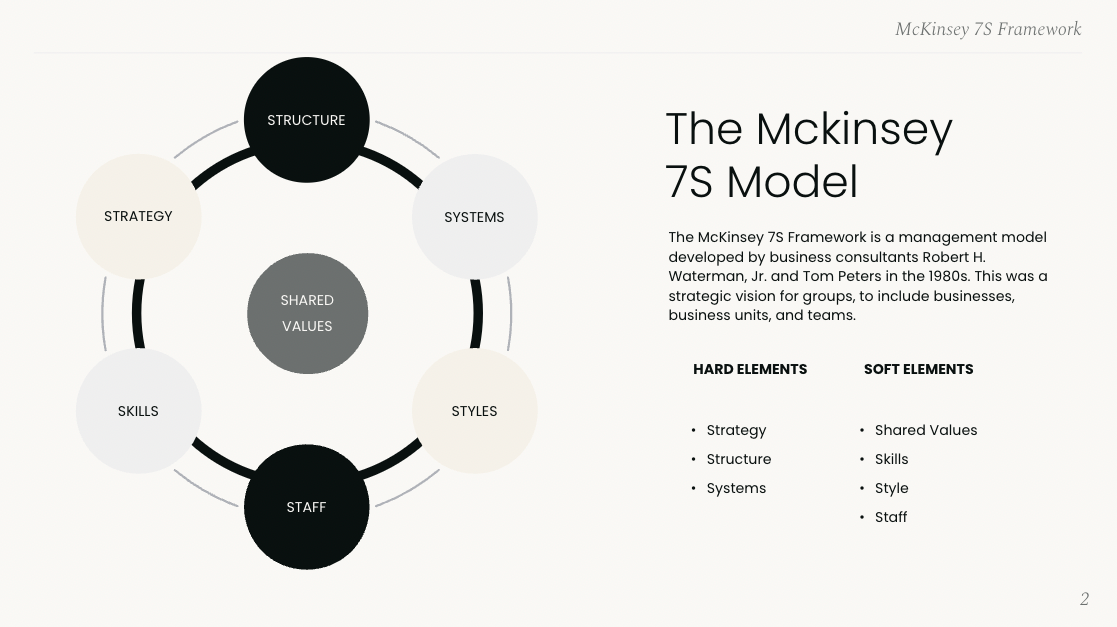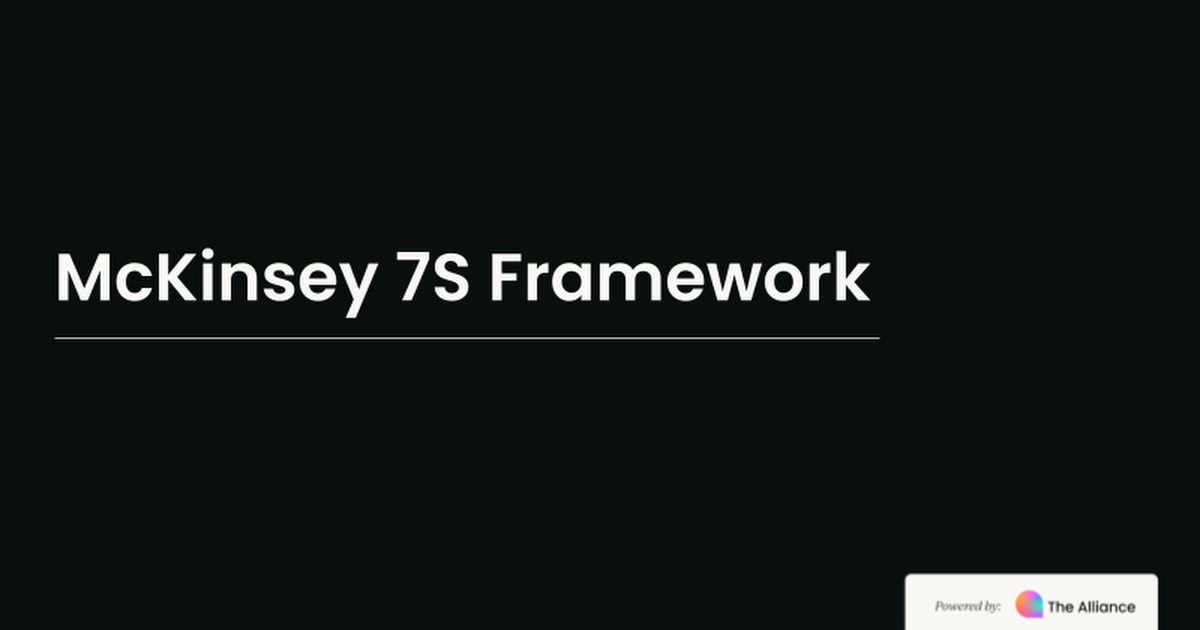What is the McKinsey 7S Framework?
The McKinsey 7S Framework is a powerful management model developed to help businesses align their internal elements for optimal performance and effective strategy execution.
Created by consultants Robert Waterman and Tom Peters, the 7S Framework breaks down organizations into seven essential elements:
- Strategy
- Structure
- Systems
- Skills
- Staff
- Style
- Shared Values
Divided into "hard" and "soft" elements, this model guides organizations in identifying alignment issues and fostering a cohesive culture.
Our downloadable pdf slide deck explores each component in detail, from formal elements like organizational structure to the softer, cultural dimensions that define company values and management style.
How to use the McKinsey 7S Framework
- Examine each element: Start by assessing each of the seven elements individually, focusing on how they currently contribute to your organization’s goals. For instance, consider if your current "Strategy" aligns with your "Structure," or if the "Skills" available match the needs of your business.
- Identify alignment gaps: Use the 7S Framework as a diagnostic tool to locate gaps or misalignments between elements. For example, ask yourself if your "Shared Values" support the strategic goals or if "Systems" effectively enable teams to operate efficiently.
- Develop an action plan for integration: Once you've identified areas needing alignment, create targeted actions to bridge these gaps. By doing so, you ensure that each part of your organization—whether it’s team skills, management style, or operational systems—works in harmony with your broader goals.
The McKinsey 7S Framework offers a structured path to organizational success by ensuring all elements are interconnected and reinforcing each other.
Download your McKinsey 7S Framework slide deck






















 Follow us on LinkedIn
Follow us on LinkedIn 

.svg?v=1abcb94374)